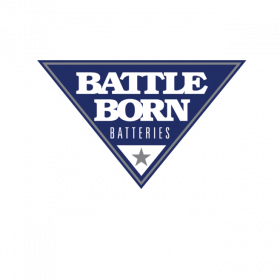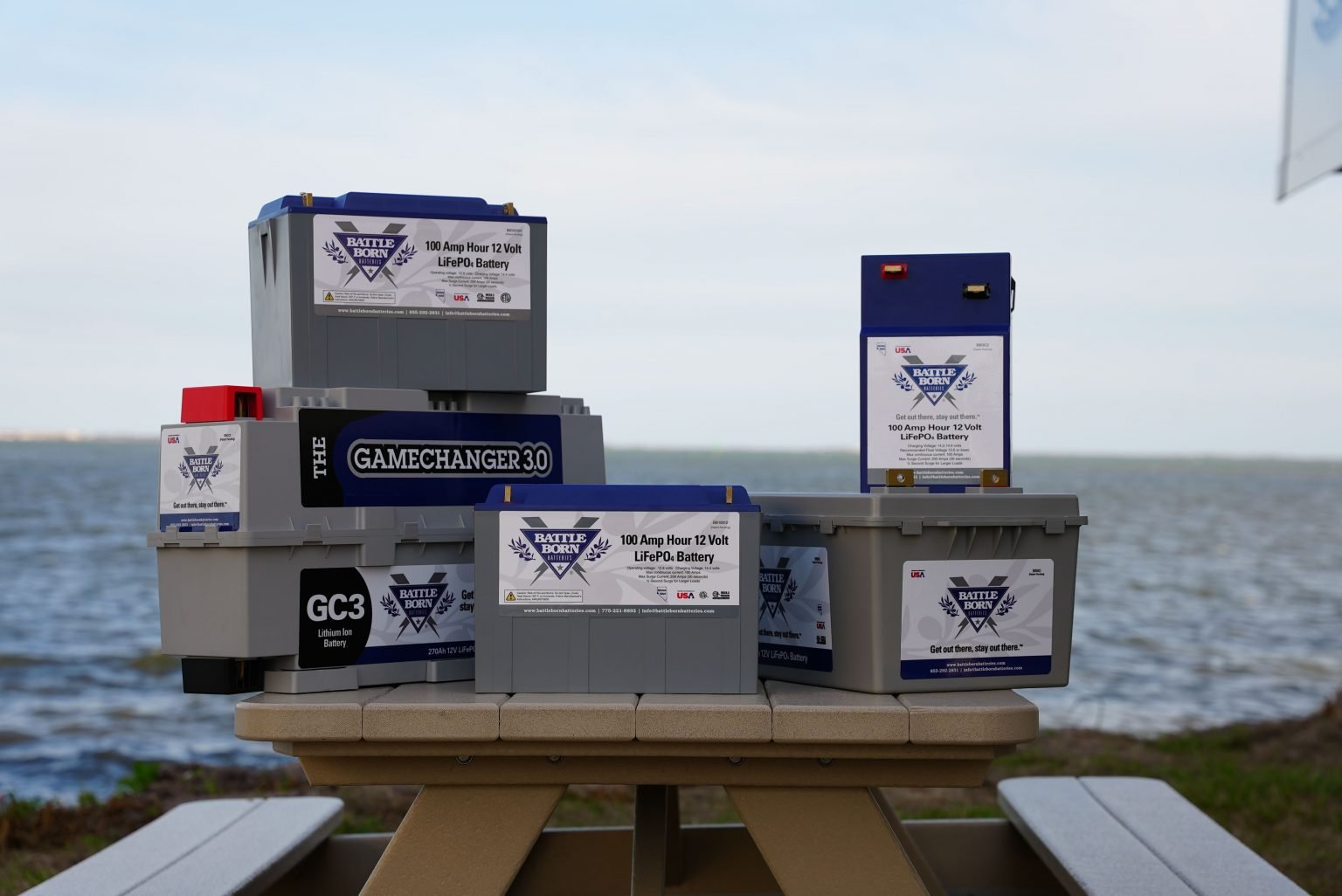
Who is Battle Born Batteries?

Battle Born Batteries designs and assembles lithium iron phosphate (LiFePO4) batteries right here in the USA, in Reno, Nevada. Our company’s goal is to reduce the cost of green energy storage, making it more widely accessible to all. We are currently manufacturing and selling affordable, high-quality energy storage that enables RVers to get out there and stay out there longer.
Our batteries are built to last 10 to 15 years and are backed by an industry-leading 10-year warranty.
Want to know more? Talk to our friendly and knowledgeable sales experts. They know all about our batteries and will help you build the perfect setup for your energy system. They are happy to answer any questions before or after you make your purchase and can troubleshoot a wide variety of problems.
What Can Lithium Do For You?
Lithium-ion batteries are the next step in energy storage technology, outperforming lead-acid batteries in almost every way.
Our Batteries:
• Charge up to 5 times faster and store more energy while weighing less
• Last longer, with a lifetime of at least 3,000 to 5,000 cycles, and last up to 15 years if not longer.
• Can be fully discharged without damaging the battery
• Require less maintenance
• Operate better in cold temperatures
• Don’t leak corrosive acid or toxic gas, so they are better for the environment.
Battle Born Batteries even have internal Battery Management Systems (BMS) that protect the product from harmful events such as short circuits, high/low voltage cutoffs, and thermal runaways. The BMS also balances each battery at the top of every charge, helping the batteries last even longer.
Our internal BMS and stable LiFePO4 chemistry make our batteries one of the safest ways to store energy on the market.

Exclusive Offers for Hit the Road RV Summit Attendees

Thank you for attending this year’s Hit the Road RV Summit! As a show of appreciation, Battle Born Batteries will be offering special discounts and giving away some special prizes to some lucky attendees!
Attending the Summit for free? Take advantage of $50 off per battery on our standard battery line by calling in and mentioning the special Summit Code! This deal is only available over the phone Monday April 26 – Friday April 30, from 8am PST – 5pm PST.
Upgraded to the Lifetime Access Pass? You’ll get a coupon for $75 off per battery on our standard battery line! Plus, you’ll go in the draw to win one of two Battle Born Swag packs, including a tote bag, hats, shirts, beanies, and more (valued at $150 each).
AND, one lucky Hit the Road RV Summit attendee will win a Battle Born 100Ah 12V BB10012 lithium battery, valued at $949.
Our Batteries in Action
FAQs
Battle Born Batteries only sells accessories from brands we know produce quality products. One such company is Victron Energy. Battle Born is a master dealer of Victron components because they are reliable and well-built. They even offer the Victron Connect phone app where you can view all the details of your Bluetooth capable devices. Our team also recommends components from Progressive Dynamics and Magnum. We have plenty for purchase, so check out our store if you’re looking for more power!
One component we often recommend is the Victron Energy SmartSolar MPPT charge controllers for systems equipped with solar. With Solar Charge Controllers we recommend the following settings:
bulk and absorption: 14.4 volts
float: 13.6 (this setting will depend on the size of solar incorporated into your system)
We also frequently suggest Victron’s IP-65 Blue Smart Charger because it’s waterproof, Bluetooth compatible and has a charging profile for lithium batteries and other battery chemistries. This device connects directly to the battery and is meant for single-battery charging. It’s great for those with trolling motor applications or those with battery systems connected in series.
For alternator charging, we often recommend using a DC-to-DC charger or battery-to-battery charger. The Victron Orion-TR Smart DC-DC isolated charger is an adaptive, three-stage charger with algorithms for bulk, absorption, and float options. You also can mix battery chemistries safely with this device, such as your AGM starting battery to your lithium house bank. Aim for a range between 14.2V and 14.6V with bulk and absorption stages and for the float stage, 13.6V is best. While lithium technically doesn’t need to be floated, a good majority of the devices out there still have a float charge mode. The batteries naturally float at 13.6V but reaching 14.6V is ideal and needs to happen in order to engage its balancing mechanisms.
+ What are the charging parameters for 12V, 24V, and 48V batteries?
Our charging parameters consist of the following:
Bulk/absorb = 14.2 – 14.6 V
Float = 13.6 V or lower
No equalization (or set it to 14.4 V)
No temperature compensation
Absorption time is 20 minutes per battery (if it’s an option)
12V:
Bulk/absorb 14.2 – 14.6 Volts (we usually recommend 14.4) float 13.6 Volts or lower
No equalization (or set it to 14.4 V), no temperature compensation and absorption time is 20-30 minutes per battery (if it’s an option).
24V:
Bulk/absorb 28.4 – 29.2 V (we usually recommend 28.8 V) float 27.2 V or lower
No equalization (or set it to 28.8V), no temperature compensation and absorption time is 20 minutes per battery (if it’s an option).
48V:
For a 48V system, we recommend a bulk and absorption rate of 57.4V and floating it at 56.5V to 57V. Sometimes, one of the batteries may trigger a high voltage disconnect in your system. The battery’s internal BMS will help handle a high voltage disconnect. Our team wants to emphasize that, overall, there’s no harm in playing around with charge rates to optimize your system.
When it comes to weight and space, our batteries only weigh 31 pounds and are energy dense. LiFePO4 batteries will also run multiple devices and appliances simultaneously, with the RV’s inverter power capacity being the only limitation. Check out our handy infographic to see more about the benefits of lithium batteries!
Call our team today at 855-292-2831 or email us at [email protected] to learn more






